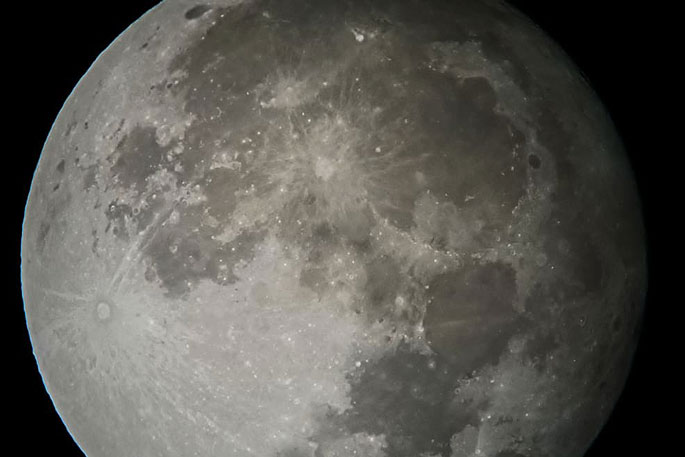Astronomy experts believe a "spectacular" supermoon spotted in the overnight skies could be eclipsed in the coming months.
Stargazers and everyday onlookers are observing the moon as "bigger and brighter" than usual this week.
A supermoon, known as a Buck Moon, was seen over the skies of New Zealand and other spots around the globe overnight.
The event happens when the moon is at the closest point to Earth in its orbit.
NASA reported the supermoon was to appear from 7.39am Eastern Daylight Time on 3 July (11.39pm Monday NZT).
The moon will appear full for three days.
Astronomy enthusiast Sam Hall describes the view from his telescope as "breathtakingly clear".
"It was just really bright and quite big.
"It lit up the whole backyard, I'd been hoping the clouds would clear and it was just perfect last night."
Auckland's Stardome Observatory and Planetarium astronomer educator John Rowe says the differences are apparent to the naked eye.
"It can be up to 30 per cent brighter than its opposite; a micromoon, and about 14 per cent bigger at the extreme end."
New Zealand's vantage point is comparable with other locations abroad and suggests the best is yet to come, says John.
"Last night was pretty spectacular.
"However, there are a couple of supermoons coming next month that have the potential to be even better."
Some visitors to the Stardome observatory have commented on the moon's appearance last night, says John.
"People have a natural interest in things that look a bit different in the sky."
Although the moon's phase is waning, John says the perigee, defined as the point in which the moon's orbit is closest to earth, will occur in about two days.
"Weather wise, a nice clear night is the best because it just does look really good.
"But if you do have high cloud, it creates halos around the moon which will be pretty spectacular also."
John believes the Buck Moon term originated from early Native American traditions relates to agriculture and farming.
Otago Museum director Dr Ian Griffin says Monday's full moon was the brightest of the year so far. The moon was typically about 380,000 kilometres away from Earth, but the distance was less than 360,000km this week, says Ian.
"The full moon is quite amazing overhead in the middle of the night."
Dr Michele Bannister, from the University of Canterbury's astronomy faculty, says although the supermoon is not a rare phenomenon, more South Islanders are observing differences.
"Everyone's noticing the moon at the moment, especially in Te Wai Pounamu. We've got some clear skies after those weeks of really intense wintry rain."
Michele says timing is also a factor.
"This time of year, especially with Matariki, people are paying attention more to what's happening around them, and in the sky.
"This is time where you settle down for the winter, you start to pause and think and ... with a bit of fine weather ... notice a bit more around you, get back in touch with the environment, and look up."



0 comments
Leave a Comment
You must be logged in to make a comment.